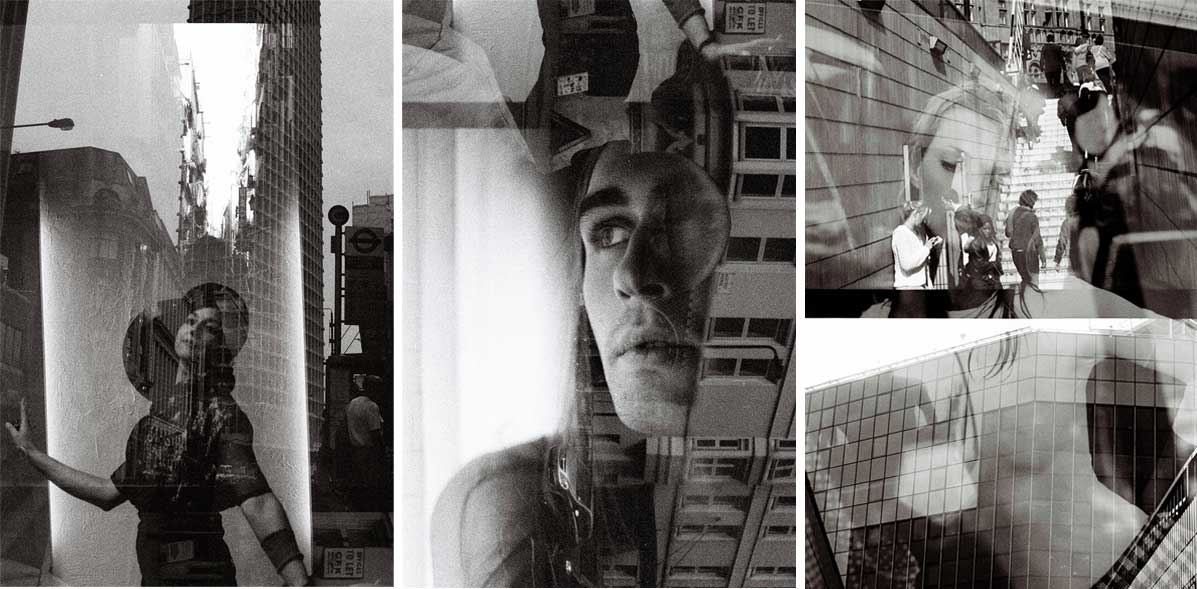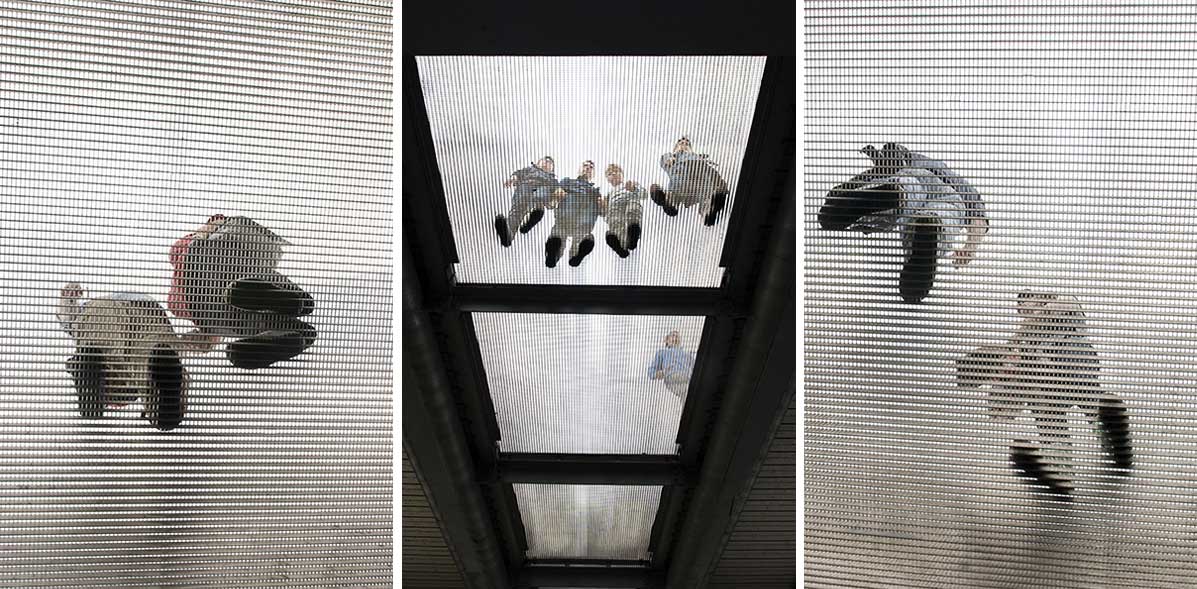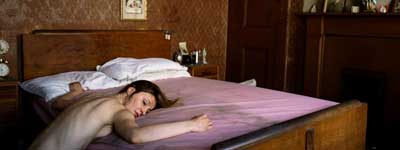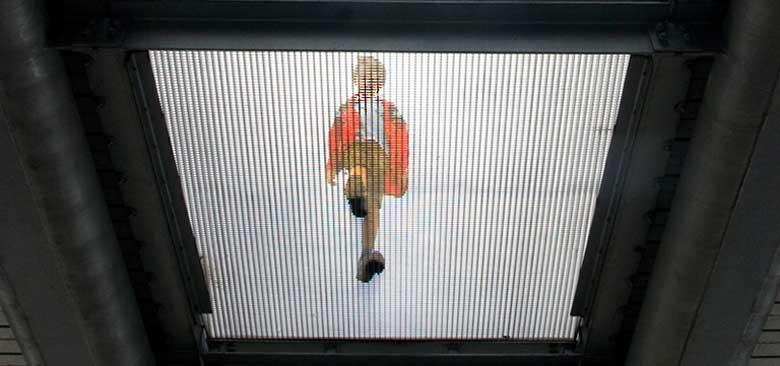Susana Sanromán is a Galician photographer who has made London her home. Since completing her studies in photography at the London College of Communication, she has been involved in a number of exhibitions both as an artist and a curator. Her work displays intimacy and delicately-woven subtleties, and she is considered part of a group of artists known as the Generation of 2008. In 2009 she published the photographic essay ‘Women looking at women: the female gaze’.
She has stretched the limits of conventional photography through her work assisting internationally renowned artist Tom Hunter.
Sanromán is a pioneer of new disciplines that transcend visual art and has worked with a number of innovative collectives in the London scene including Artcrunch, Centrepoint Collective and Shunt Lounge. She is also part of the New Opera Hero project.
Currently, Sanromán’s work is on show at London’s dynamic Stephen Bartels Gallery in an exhibition of work produced with Leica cameras, alongside photographs from across the world.A prolific photographer, Sanromán depicts keenly the peculiar charm of snatched moments, and hers is a confessional vision of human nature that includes elegant images, extracts from private rituals, allegorical moments, gazes caught in time, which help reset the memory. In constant evolution, prompted by her creative vision and a distinctive visual language, her work displays a narrative dictated by the visceral impulses of a global society, which leads to a state of hyper-connectivity, degradation, ambiguity and hypnosis.
MEMORABILIA
‘Memorabilia’ explores the eternal sunshine of a mind that does not forget. It is a look into the mysterious, complex subconscious of humankind, a rendering of moments trapped in that inexplicable human faculty we call memory.
It examines the transition of change, the reconstruction of memory, a place where remembering and forgetting are mixed together, and the emotional baggage of the very process of remembering.
The project arose 12 years ago in La Coruña, when Susana was preparing to move to London to explore her artistic curiosities, primarily photography. All she had was an ancient LeicaFlex with a 50mm Summichron lens. Developing her own negatives in black and white, she began to experiment with the images, captivated by the tactile quality of the photograph, an artefacttoday practically extinct thanks to the widespread use of digital photography. One day, looking at her father’s old family photo album, she was inspired by the power images have to make us revisit the past.
Taken over the course of twelve years (2001-2013), the series of shots making up ‘Memorabilia’ had their negatives exposed multiple times, in different years and different cities (La Coruña, Barcelona and London). The film roll thus becomes a time capsule in a place between places.
The retrospective Sanromán produces gives the opportunity to look back at moments captured by memory that are uncovered and revealed in the photos. Both present and past are present negative, creating new narratives whose central theme is memory and the inexorable, unrelenting passage of time in a life that never stands still. It is an examination of the temporal leaps to be found in the confines of our mind.

IN TRANSITUM
Here, Sanromán explores places where the crowd brings us anonimity, the advance of a city that suffocates itself, needing rest, needing to have time alone and breathe.
‘In transitum’ had its genesis in a video art commission, which aimed to examine the evolution of the movements of human masses.
This video reflected on the great challenges that human movement poses in a big city. Through it, Susana reveals her concern with the phenomenon of human populations’ incessant growth, completely out of proportion to the space around us. After countless hours of filming, she became interested not just in the behaviour of the human mass but its anonymous character, a month later embarking on a parallel photographic project this time with a more voyeuristic focus.
The very mechanisms of photography allowed Sanromán to invert that process – instead of filming a continuous flow of people, the camera was able to freeze movement, isolating single figures in the crowd.
“I was able to select specific moments that would otherwise have fallen into oblivion, like the hundreds of faces our brain automatically eliminates every day from our memories.”
The emblematic Millennium Bridge, the first new pedestrian bridge in Central London in a century, became her favourite location.
The furtive action shots capture passers-by floating through the scene. The anonymity of individuals is preserved within the communal identity of the crowd – we don’t recognise their faces, but we can make guesses as to their identities.

THE THINGS WE LEAVE BEHIND
Expressive force and a powerful underlying narrative emerge from an encounter with a landscape evoking the death, abandonment, decay, transformation and regeneration of the ferocious universe we inhabit.
In 2009, Sanromán and India Roper founded ‘Artcrunch’ (art in the credit crunch), a project promoting the use of recycled materials to lower artists’ production costs, and seeking abandoned and alternative sites to exhibit works. It was during this period that Sanromán’s interest in the idea of materialism as a social disease emerged.
Her collaboration with the sculptor María José Arceo, in particular on their ‘Oceans of Plastic’ project, was the starting point for the artist’s reflection on exponential population growth, our relentless consumption of possessions that we eventually cast aside, and the serious repercussions that this entails.
‘The things we leave behind’ highlights the cumulative effect of continually producing new goods and what this means for our environment. The scene is a decadent landscape of items we have disposed of as a result of the recent economic crisis. The work examines the effects of the slow abandonment of certain activities and industries which have become impractical as a result of their unsustainability, and restrictions of the broader economic system.
Beneath real scenes of waste accumulating, and a display of the slow abandonment of these inviable industries, Sanromán creates a purely figurative discourse, turning these mummified relics into anonymous signifiers, which suggest the existence of man and society as catalytic forces in our environment.

TOM HUNTER
Hunter seeks out unusual and exotic images that narrate stories in which imagination is the only key to understanding the world around them. Inspiration and creativity are reflected in a dreamy reality distant from the mundanity depicted in his work. This acclaimed and award-winning photographer has a great eye for portraying and capturing talent, making it little surprise he found Susana Sanromán the perfect assistant.
“Tom is a warm person, takes his work seriously, but has a fantastic sense of humour. His curiosity has always fascinated me, he’s like a little boy looking at everything, always getting absorbed in whatever he finds around him. I admire his love of painting and his sensitivity when it comes to establishing visual narratives with such palpable resolve and tenacity. His work positions him as a Hackney artist through and through.”
Through 2009 and 2010 she assisted him on a personal project, culminating in an exhibition in the prestigious Purdy Hicks gallery and the production of his new book, ‘The Way Home’.

“What I didn’t expect was to end up as a model in one of his images. He had secured a place to shoot in Hackney, an Italian café with a flat upstairs. One of its rooms was particularly picturesque, full of Catholic religious objects and with a very special, decadent aura about it. The building was going to be demolished and Tom had in mind the idea of doing a photographic interpretation of Eugène Delacroix’s ‘Death of Saradanapalus’. He didn’t have a model, and he was pushed for time. Initially, I was somewhat reticent and didn’t feel comfortable sitting for the picture, but in the end I gave in to it.”
What nobody could ever have imagined is how popular the final product, ‘The death of Colotti’, would become. The photograph became the front cover of his book, and was positioned prominently in The Guardian and in major photography magazines such as the British Journal of Photography. The photograph was also chosen to represent Tom Hunter in a major group exhibition at the National Gallery entitled ‘Seduced by art’. This exhibition also toured the CaixaForums in Barcelona and Madrid.
This experience is what makes Susana Sanromán a vision of limitless intimacy.
More information about Susana Sanromán on her own website: http://www.susanasanroman.com/
Susana Sanromán events at Spain Now: www.spain-now.org.uk/events/susana-sanroman-open-studios-weekend

